Sales Tax, Bradley Center Transportation, The Moderne, and More
Welcome to the third installment of Eyes on Milwaukee. This week we take a look at Milwaukee’s sales tax rate compared to other major cities, the Bradley Center’s new transportation option, UWM’s continued insistence on growing parking subsidies, and a whole lot of development news.
The Tax Hell We Might Not Live In
Despite the public sentiment that the taxes are just too high in Wisconsin, it turns out that it’s quite cheap to eat out here when taxes are considered. The Tax Foundation has found that Milwaukee has the second cheapest “meal taxes” of the 50 largest cities in the country when the sales tax and any additional meal taxes are considered (Portland is first, or last depending on your position). Milwaukee weighs in at a combined tax of 5.65%, compared to first and second place Minneapolis and Chicago at 10.775% and 10.75%.
Yet another example of the odd tax distribution in Wisconsin. In a more logical world Milwaukee could leverage a higher sales tax (or even just a meal tax) to fund road repairs and other transportation needs as opposed to relying heavily on the property tax levy. This would do a better job of charging those that drive on local streets frequently, but aren’t residents of the city.
The Bradley Center and Transportation
The Bradley Center is set to unveil BC Easy Ride on April 19th. The program will provide round-trip service to the Miranda Lambert concert taking place on that day from Madison, Elkhorn, and Mukwonago.
Hopefully the service helps attract people to the city that are afraid, concerned or incapable of driving downtown. With any luck they’ll see what a nice place our fair city is and come back for a bit longer next time.
Worst case scenario, the program keeps a few drunk drivers off the road in Milwaukee. Though all bets are off on how they get home from the Park and Ride drop points.
Freeway Followup
Larry Sandler has more on the Lake Parkway extension following last week’s public hearing.
More UWM Parking Subsidies
In another example of mind-boggling policy at UWM, the Student Association is close to a deal for 200 more “free” parking spaces. Instead of sanely metering the spaces, the Student Association will raise the segregated fees of all 30,000+ students by $6.50 a year to pay for 200 students to park everyday.
For those keeping score at home, in the past two years the Student Association has managed to raise the annual cost of attending school by $26.60 on all 30,000+ student to pay for 900 parking spots.
The Moderne Tops Off
In case the cold weather has kept you from looking up recently (you have no excuse given today’s irregularly warm weather), there is a new tower west of the river. The Moderne topped off in the past week at 30 stories and expects to open to residents in September. The development is slated to have 203 apartments and 14 condominiums.
The Point on the River and Karl Kopp’s 100 Seeboth
The Point on the River, formerly First Place on the River before receivership, is very close to selling out with only 7 of the 147 units remaining further dispelling the misguided notion that Milwaukee is littered with hundreds of unsold, high-rise condos.
Next door to The Point on the River, Karl Kopp (of Kopp’s and Elsa’s on the Park fame, as well Arizona and New York restaurants) is finally poised to do something with 100 E. Seeboth St. The building is currently an unintentional experiment in urban agriculture with a tree growing through the roof, leaving the new development to likely only retain the south and west facades.
Also of random Karl Kopp interest, he developed a townhouse at 277 Mott Street in Manhattan’s SOHO neighborhood. The Google Maps Streetview images clearly show an LLC as the owner located at 833 N. Jefferson Street – the home of Elsa’s on the Park. What will it take him to develop an infill townhouse at this Milwaukee location on Milwaukee Street?
Development News
The Italian Community Center is moving ahead with Marcus Corp. on a mixed-use development for their massive parking lot in the Historic Third Ward. Given the size of the lot, the development could redefine the size of the neighborhood. Here’s to hoping something positive happens there.
KBS Construction chairman Dennis Klein is looking to buy the city-owned block at the southeast corner of 27th and Wisconsin. Klein is also looking for additional public aid to help construct a 48,700 office building for the Wisconsin Bureau of Milwaukee Child Welfare.
Rick Wiegand, owner of the Ambassador Hotel, bought the 19-unit apartment building at 2125 W. Kilbourn Avenue near 21st Street. Wiegand owns approximately 12 apartment buildings.
The Best Western Inn Towne hotel on West Wisconsin Avenue is still for sale.
Things are moving forward on relocating bus operations from the Downtown Transit Center. We’ve endorsed this idea in the past.
RSC & Associates is back (sort of), looking quite promising this time to actually break ground on their Park East parcel.
There are plans coming together for a residential development project on the Gallun Tannery site.
Apparently some friction is developing between Joel Lee and Irgens Development over the plans for the Washington Square office project. No surprise given that Baker Tilly opted for the US Bank Center.
The Milwaukee Water Council closed on the purchase of 223 W. Pittsburgh Avenue. Renovation work will begin this summer.
Peter Sciortino‘s Bakery is plotting an expansion that will require the demolition of an adjacent home.
Brandon Jennings Relocates
At some point Brandon Jennings relocated to the Mandel Group’s Marine Terminal Lofts in the Historic Third Ward from his previous residence in St. Francis. In his latest commercial for Under Armour, Jennings shows off what he did over the All-Star two weekends ago. One can only hope at some point he finds consistency with his jump shot.
Openings and Closings
Fast Foodie, the food truck (well more trailer), will be adding four electric bikes to its arsenal starting this summer.
Odd Duck – A new restaurant is coming to Bay View in the former Future Green space.
Schlitz Park will add a new cafe to the RiverCenter atrium space that will serve breakfast, lunch, and snacks replacing Elliot’s Off-Broadway Deli.
Fanatics Sports Central is closed for maintenance.
Photo of the Week
Eyes on Milwaukee
-
Church, Cupid Partner On Affordable Housing
 Dec 4th, 2023 by Jeramey Jannene
Dec 4th, 2023 by Jeramey Jannene
-
Downtown Building Sells For Nearly Twice Its Assessed Value
 Nov 12th, 2023 by Jeramey Jannene
Nov 12th, 2023 by Jeramey Jannene
-
Immigration Office Moving To 310W Building
 Oct 25th, 2023 by Jeramey Jannene
Oct 25th, 2023 by Jeramey Jannene


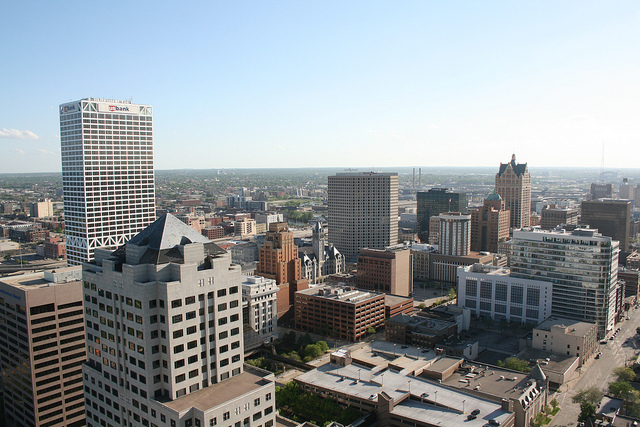
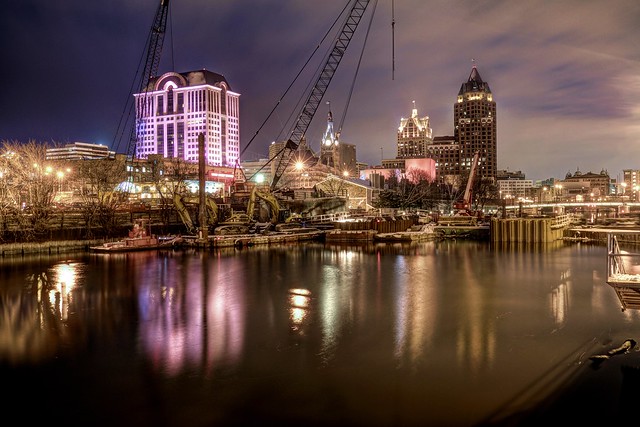

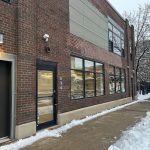



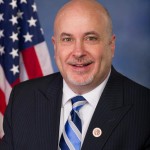





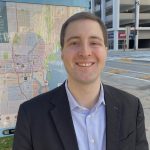








Why is this article so needlessly negative?
The reality is student parking is a major problem, students cannot afford the burden of having to pay for parking. They should be able to save their $50 a week and spend it on food, textbooks, and other necessities.
@UWMSA
By providing “free” parking, you haven’t actually lowered the cost of parking to the campus as a whole. “Free parking” merely shifts the costs around. Now every student pays a portion of the supposed $50/week.
I can support programs like UPARK and UPASS because they have positive externalities. They free up valuable space on campus for those who need to drive there, for whatever reason. To paraphase many transit campaigns “some use it, everyone benefits.”
I can’t support programs like free, on-campus parking because it takes a limited resource and just gives it away to a select few, at the expense of the non-users. Non-users see no benefit.
Loving this column! Keep up the good work!
@Jeramey Jannene
“Non-users see no benefit.”
Use as many big words as you’d like, but your logic implies that you just do not understand the situation that you are talking about. UPASS does not simply “free-up” these spaces. These spaces are desperately needed because of UWM’s substantial driving population. This is not theoretical, this is reality. Non-athletes do not benefit from Athletics, online students do not benefit from the Union, non-infant havers do not benefit from the Child Care Center, non-LGBTQ people do not benefit from the LGBTQ Center. Your logic implies we should not have any fees that do not benefit non-users. You are not correct.
The UWMSA has subsidized the programs “you can support” (gee, thanks?) by three times as much as any subsidy that incentivizes commuters. I’m seriously confused. Are you on the UWM Office of Parking & Transit’s payroll?
@Common Sense
UPASS certainly does free-up the spaces. Every car that parks in a UPASS lot, is a car that isn’t on campus.
My logic implies that you should have fees that are designed to produce positive externalities for the campus.
@Jeramey Jannene
The positive externality in this case is a general benefit for student life. A campus full of commuters is encouraged to park in the on-campus garages rather than be subject to City of Milwaukee parking fines. The street spaces around campus are only 2 to 3 hour. This is not long enough for many students, and they may also not have time to run and move their car. A positive externality occurs when they are afforded the opportunity to park without daily charge in a subsidized space on-campus. Commuter student not have to walk far. Commuter student not have to fight for street space. Commuter student not have to run and move car every two hours. Commuter student not have to worry about ticket. Commuter student possibly not even have to pay hourly rate. Commuter student very very happy. UWM student life as a whole better.
How much does the UWM Office of Parking & Transit pay you?
You’re lost in some sort of sustainable economic idealism. Welcome to the real world. We try for greener options with UPASS and park-and-ride (again, this is TRIPLE the subsidy for subsidized spaces). We simply cannot deny that masses and masses of students drive anyway. Again, this is just reality. Sorry?
@Common Sense
The UWM Office of Parking & Transit doesn’t pay me anything.
I’m not arguing that many people drive to UWM’s campus. My point is that by giving away “free” parking (by making everyone pay for a select few stalls) you’re misappropriating a scarce resource.
If the students had to pay individually to park on campus, then the market demand could be accurately gauged and additional parking could be built as needed.
UPASS subsidies are 45/semester (I believe) versus what will now be 26+/semester for 900 parking spaces. The difference is that when someone takes a bus to campus, they don’t use a parking space and leave scarce space available. When someone drives to campus, they produce no benefit to anyone else but themselves. All the benefits you listed before accrue to one individual.
Interestingly enough, Larry Sandler of the Journal Sentinel just ran an article noting that 70% of UWM eligible UWM students picked up their UPASS last fall. That at least signals a large intent to utilize the bus at least once by a very large percentage of the campus. http://www.jsonline.com/news/milwaukee/milwaukee-county-bus-ridership-up-slightly-u84ft0f-141868053.html
@Jeramey Jannene
Weird as it seems, many on-campus garages are highly underutilized. The Klotsche Pavilion (where the 200 possible new subsidized spaces would be) has rates $0.45 lower per hour than the Union garage, but still generates 1/5th less revenue yearly. It’s a huge problem, and UWM hasn’t been able to come up with an incentive for students to take advantage of this facility. The demand is there, as any UWM student who glances at the streets around campus could tell you. Also not mentioned is that the original deal for the Klotsche Pavilion was $30.00 for 400 spaces. I fought to strike this deal and cut it down to $6.50 for 200 spaces. We’re not all so bad in the Student Association. It’s tough to argue that this isn’t a fair deal.
When I say “student life” I suppose I’m referring to everyone, not just the 1 of 900 who benefits. Your contention that all the UPASS users would otherwise be jamming up the parking lots is dubious. For one, as I’ve said there are plenty of spaces to go around and we’re having trouble getting students to utilize them. For two, most of the regular UPASS users simply do not have a car that they can take to school every day.
It’s been fun debating! I had no idea that subsidized parking on a historically commuter campus could be an issue to stir the pot so much! Take care.
If you’ve ever tried to park in the union structure, you know that there is huge demand. Often, you can see lines of cars waiting to enter. Obviously the price charged is too low.
It’s the same thing with street spots around campus, even with the hourly restrictions & threat of tickets… there are many, many people looking to park. The cost of that parking is relatively low.
So how would adding spaces at the already cheaper & under-utilized Klotsche center, improve the parking situation?
Get people out of their cars, at least for the last couple miles of their trip. UPASS & park/ride lots do this, spending more on campus parking is loosening your belt to fight obesity.
Hello streetcar? I’d much rather see money spent on a couple new high-rise dorms. Driving should be minimized if at all possible